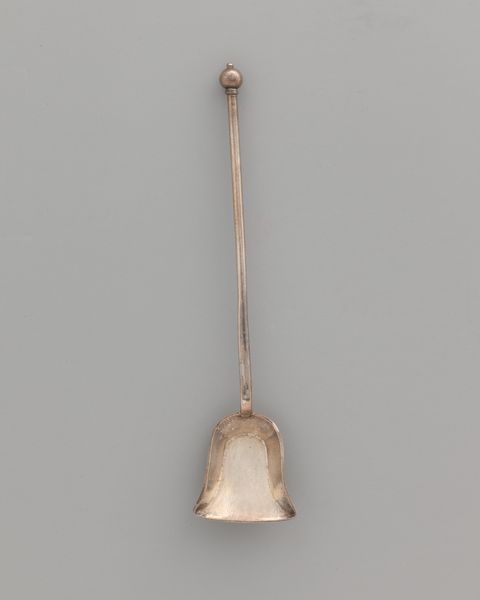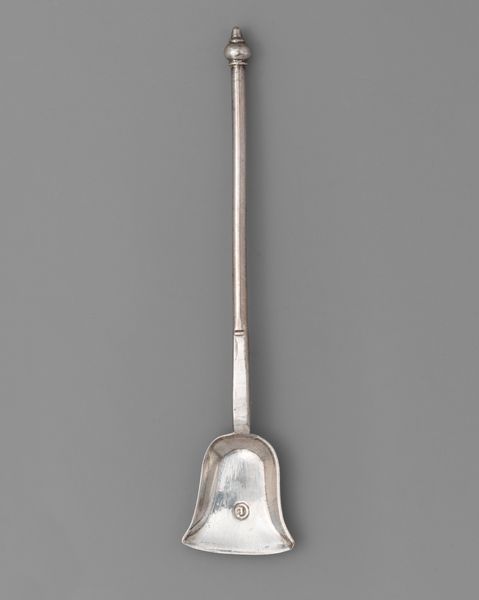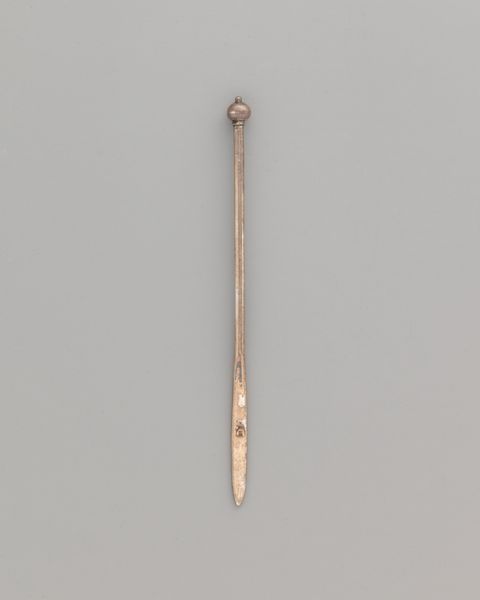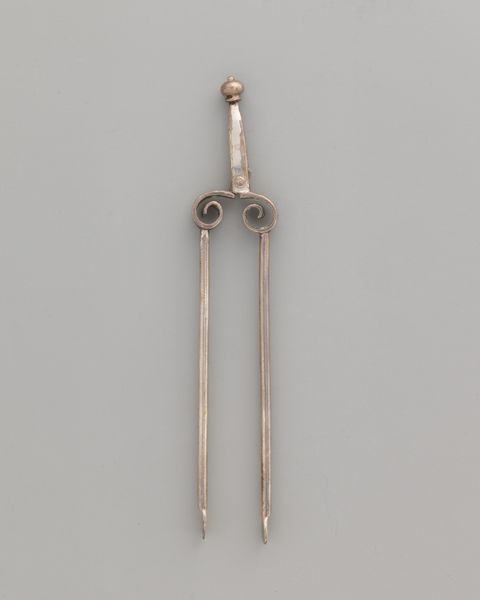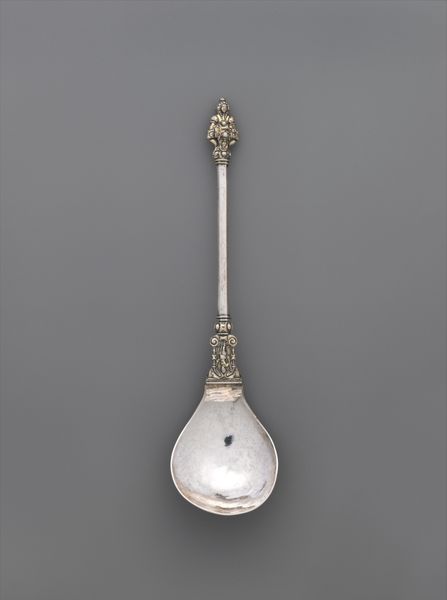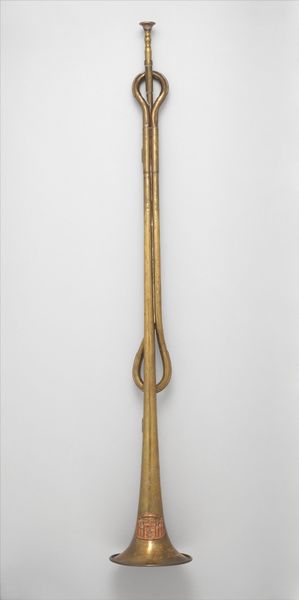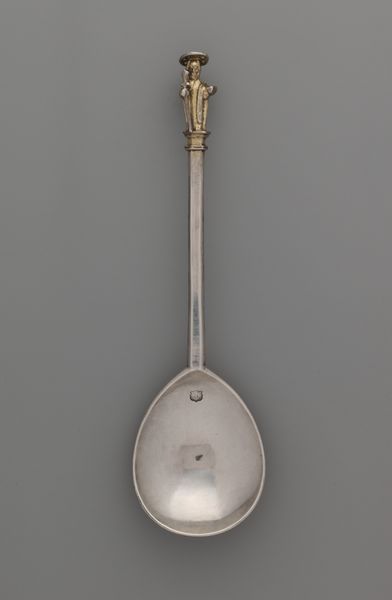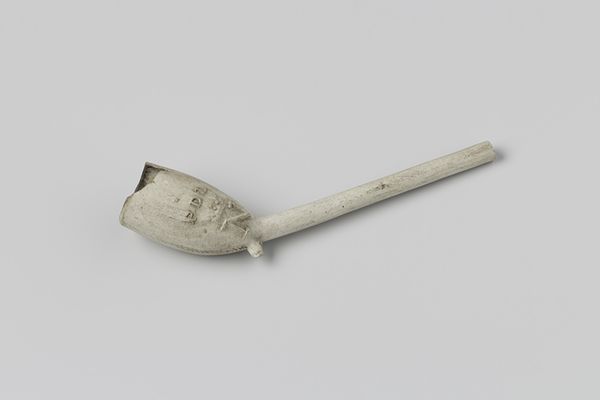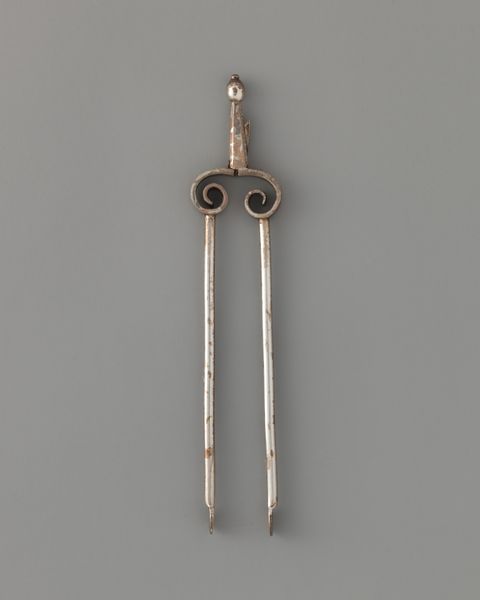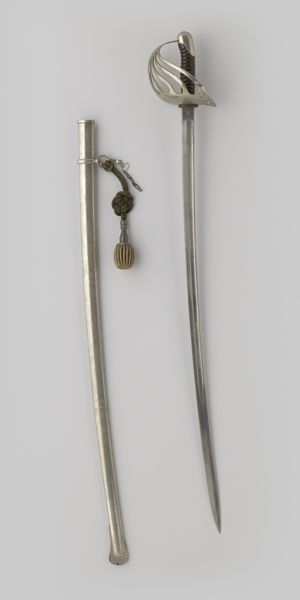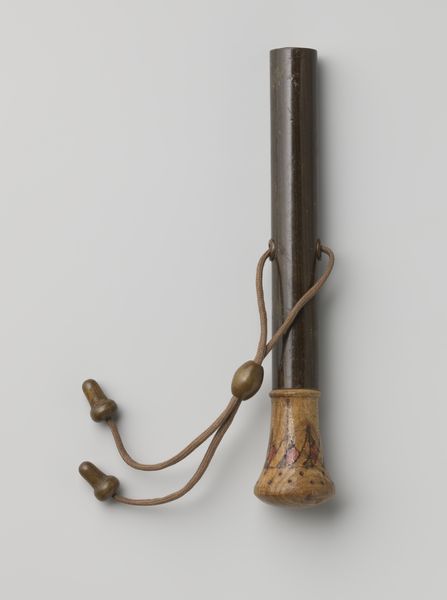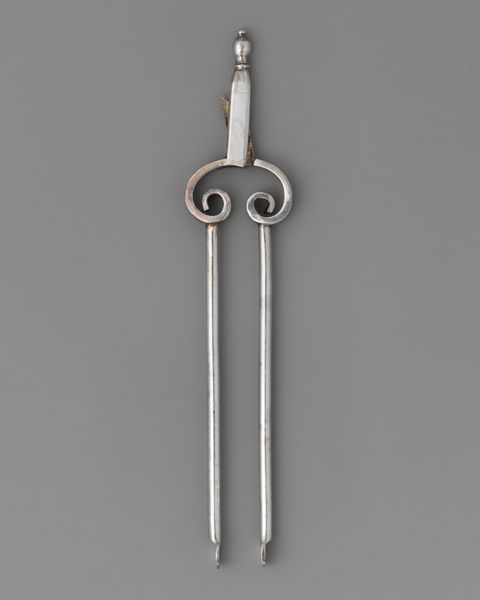
silver, metal, sculpture
#
clear graphic shape
#
3d model
#
silver
#
baroque
#
3d printed part
#
rounded shape
#
metal
#
plastic material rendering
#
virtual 3d design
#
round design
#
curved arc
#
3d shape
#
sculpture
#
metallic object render
#
decorative-art
Dimensions: Length: 3 7/8 in. (9.8 cm)
Copyright: Public Domain
Curator: Ah, this diminutive silver shovel practically sings! The material speaks of wealth, even extravagance, doesn't it? Editor: It’s oddly compelling, but somewhat forlorn, in its rigid, almost sterile simplicity. What purpose did something like this serve? Curator: Indeed. What we are viewing is a “Miniature Shovel (part of a set)," crafted sometime between 1685 and 1715, placing it squarely in the late Baroque era. Its home is now here at The Met. Editor: Baroque...yet stripped down. The polished metal surface, the elongated handle terminating in that tiny sphere – it projects a studied elegance despite its, shall we say, mundane function. How very curious! Was this simply decorative? Curator: Precisely. These miniature implements weren't tools for any practical application. Such items served as playful decorations within wealthy households, reflections of status and leisurely pursuit of the decorative arts, much like dollhouse furniture. Editor: So, display elevated over function. And the fact that it’s silver, this wasn’t meant for any actual ‘digging,’ correct? It reflects this self-aware theatricality popular within those circles at that time. But look – is that a mark, down near the bottom of the shovel scoop? Curator: Good eye! Yes, such hallmarks are frequently encountered on precious metalwork. They served as identifiers of the silversmith and assayed materials; providing reassurance as to the object's content. It brings the whole conversation down to worth—value—as viewed in the period. Editor: So even miniature utensils became objects d'art, carriers of meaning beyond their form! It shows so much about class divides at the time. The upper class fetishized ‘the work,’ when others were performing labor nonstop. It becomes a bit grotesque the more I think about it. Curator: Grotesque perhaps, but a fascinating distortion nonetheless. A piece of history speaking silently about power dynamics—a microcosm, if you will. Editor: A very apt comparison, that! Looking at it in those terms...yes, it’s left me with much to consider beyond this simple piece's lines. Curator: And that is precisely the beauty of art, wouldn't you agree? The conversations they stir and the questions they leave behind.
Comments
No comments
Be the first to comment and join the conversation on the ultimate creative platform.

